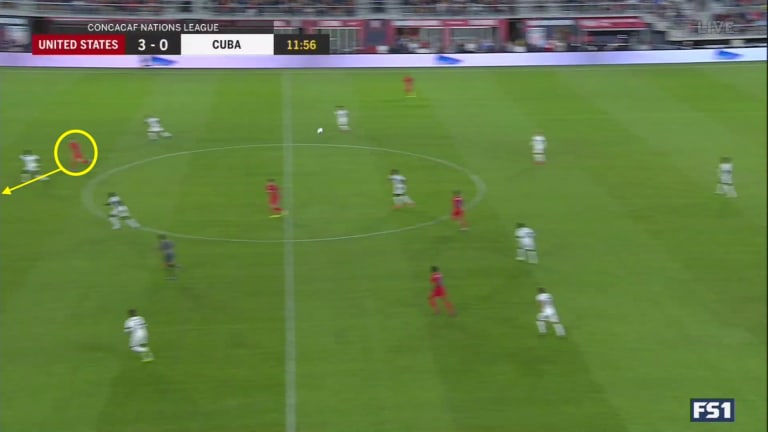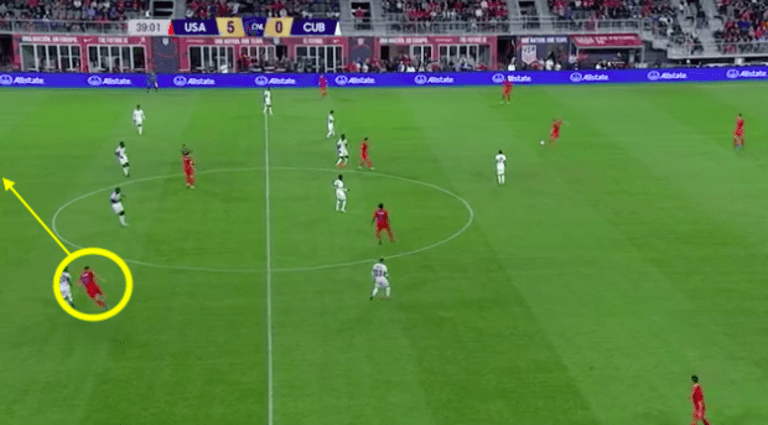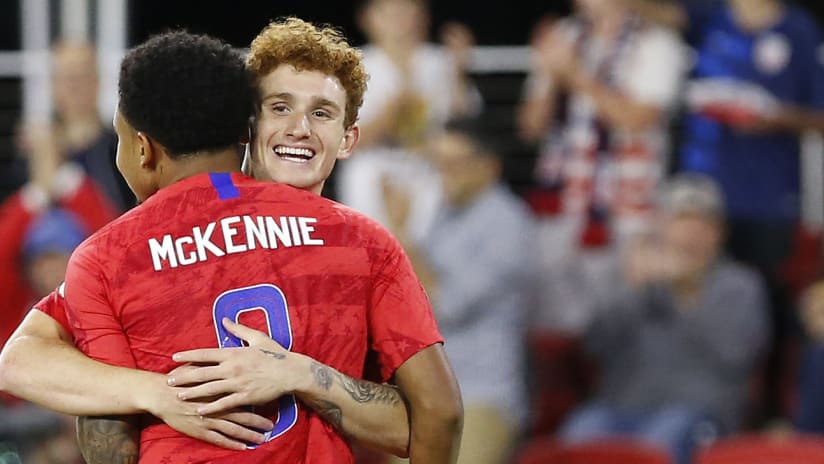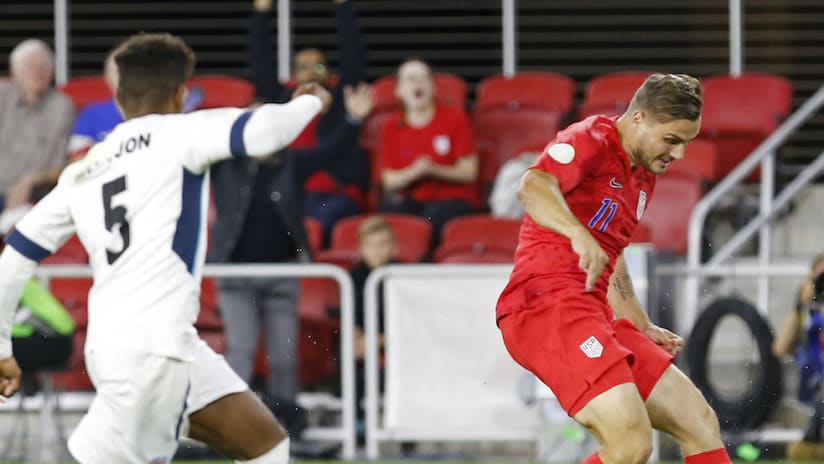Does it matter that the US men’s national team scored seven goals at home against Cuba? Not really. That should be expected.
But it matters that six of the goals came in a similar manner.
Gregg Berhalter emphasizes positional play with the team’s attack. In positional play, every attacker takes a starting position that naturally puts a defender in a pickle. Some teams call these spots “half spaces.” Each surrounding defender is stuck halfway between different defensive options.
On top of that, the attackers also have preset movement options. A team would have a couple sets and a couple different movement options — often called “ideas” — within each set. If the defense takes something away, you have something preplanned to adjust into to cause new problems.
Think of it like basketball offense: every team has a motion offense with plays, variables, and triggers within it. If a defender cheats, the player can backcut for a layup. If the defense takes away Option A, the offense knows to choose Route B — and both the player making the run and the player making the pass know what Route B is.
Easy enough, right?
The tricky part is making those decisions on the fly. You have to recognize the decision the defender is making, and thus the choice that you, as the attacker, should make in the run of the game. You don’t get to pause the game and calculate what’s happening; you have a couple seconds to make your move.
It’s in those two-second increments games are won and lost. You can draw the perfect logical positional-play scheme, but if the players can’t recognize the right decisions and act decisively, the whole thing gets slow and bungled. We’ve seen the bungled part a few times in the last 10 months.
We saw Friday night what happens when it clicks. They made the quick decisions on the fly.
Let’s take a look at the first two goals, both of which came from the exact same pattern. We can call this Set 1. Jordan Morris starts inside and as the ball travels to the right back Reggie Cannon, Morris peels out and takes off.
Goal 1
Goal 2
As Katie Witham said on the broadcast, it was a specific pattern the team had worked on.
Let’s check out the next goal then. The US went into the next “set” within the offense. Time for Route B. Worried about the wingers running behind the defense? That’s fine, we are going to move the wingers wide to create that space for someone else. Notice how Morris and Christian Pulisic have moved toward the sideline. The circled player is Cristian Roldan, an attacking midfielder, taking that central spot and driving down the middle.
Goal 3
That’s pre-planned.
Goals 4 and 6 saw a return to Set 1... but with Pattern B. Notice how Morris starts central again, but instead of running inside-out, he’s running toward goal (the 6th goal starts with an outside-in run but the ball sends him back wide). His trigger to run central is the striker, Josh Sargent, drops into the middle.
Goal 4

Goal 6

These are all actions Berhalter put on the whiteboard and the players executed on the fly.
Is all of this devalued because it was against Cuba? For sure. No disrespect to Leones del Caribe, but you get extra processing time against Cuba compared to Mexico or Canada. Those milliseconds matter. But like anything else, if you can’t do it at slower speeds, you probably won’t be able to do it at a quicker pace. It’s better than not being able to do it against Cuba.
Does it matter that being good at all of this might actually make the USMNT predictable? Maybe. But that’s where the various sets and patterns within each set come into play. There’s a Route B to everything, an answer to every problem, and it’s only a matter of finding it in the moment.
Berhalter has made a gigantic bet he can teach all of those options and have the players build the muscle memory with the time restrictions of international football. Friday’s big win over Cuba certainly doesn’t mean he’s going to win that bet. Games like the one against Canada on Tuesday will be much tougher. The process in which they dismantled Cuba, though, will allow Berhalter to fall asleep with a smile.












